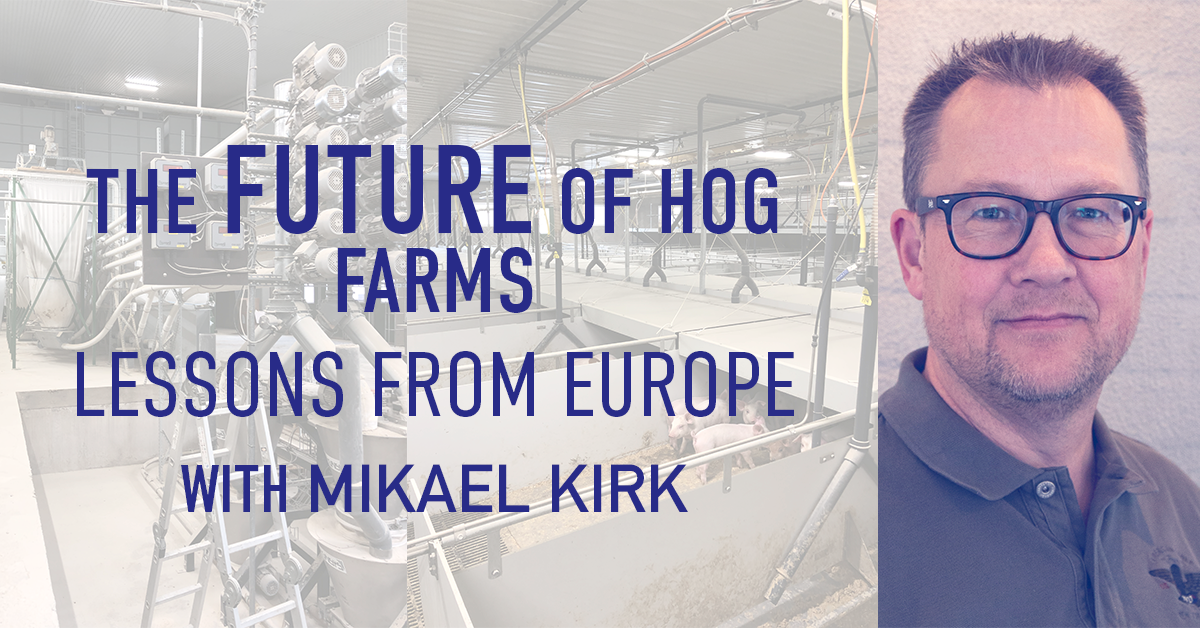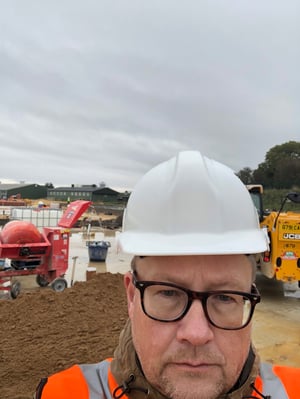
In a recent blog, we were able to interview Mr. Mikael Kirk of AgriSys about the history of loose sow housing and ESF in Europe. Our conversations brought us to the potential future of hog farming. Mikael had some interesting thoughts to share.
New Standard Group (NSG): What do you see on the horizon for loose sow housing?
Mikael Kirk (MK): I think loose sow housing will be one hundred percent required in the future. It is going to go much quicker than they (farmers) expect. Not all farmers are going to like this, but ultimately, I think consumer demand is going to make it inevitable. Might as well prepare now, take a proactive step.
NSG: What trends do you see now in Europe, the United States should be aware of?
MK: A few things come to mind, again, one-hundred percent loose sow housing, full-line animal welfare is the perceptions of the consumers. But not just housing, even cutting tails and castration, here in Denmark we cannot castrate piglets without sedation, and tail cutting is not allowed. Consumers want "clean pigs," no hormones, antibiotics including feed additives, it's a no go. Scandinavia is leading the effort in using less or no antibiotics with Norway, Sweden, and Denmark leading the way. Consumers want transparency and guarantees that there are no antibiotics or additives in their meat. Antibiotics have even made the news lately, discussions again about antibiotics; even when there is a guarantee, it will not be in the pork in the supermarket. Consumers will not accept their use.
 NSG: How should US producers be preparing to stay competitive with the rest of the world?
NSG: How should US producers be preparing to stay competitive with the rest of the world?
MK: Listen to the consumers. We are all the same species across the world and it’s just a matter of time, everyone is talking on the internet and what a trend is here today, will be a trend there tomorrow.
We see in China, where animal welfare and antibiotics have not been the focus in the past, a significant shift to group sow housing. China skipped the PC and went straight to the Smartphone. This access to information is causing movement in the larger cities and pushing for better practices and animal welfare. I think this generation is going to expect group housing all the way.
Beyond listening to consumers, I'd say, go for it. It is the only option. Find other producers who are successfully using loose sow housing and experts that have lots of experience, like New Standard, start collaborating, and get started. If a supplier cannot give you reference, think about it one more time and find someone with experience.
NSG: So that brings up a question. The definition of loose sow housing in the States is very vague. Is it well defined in Europe?
MK: That is my point, you need to collaborate with people who have good stories and cases, in Europe, we have specifics, for example, there must be no place in a barn more narrow than 3 meters so that sows can pass with extra room. That's just one example of a general rule; you can still do lots wrong. Rely on people like New Standard that have the experience and track record.
Like I said at the beginning of the interview, there are bad feed stations and layouts on the market that have been the cause of bad stories. The design is just as important as the equipment, if not more so.
NSG: What advice would you give US producers regarding group sow housing?
MK: Get advice. Connect with experienced designers. There are bad solutions and equipment out there. Do your homework and look beyond the equipment and look for planning that works long-term. Many mistakes can be avoided with proper research.
NSG: Why should producers consider making changes now instead of waiting?
MK: It is just a matter of time at this point.
NSG: Now we know you have lots of experience in Europe, but you also have done some significant projects in China. How is African Swine Fever (ASF) impacting these markets?
MK: This is a very serious question. ASF is having a huge impact, and some farms are closing in China that have not been infected yet, projects are getting postponed, is it very critical. I think it is worse than the official numbers coming out.
I do not believe China is being honest and open with the issue. In Europe, we are seeing meat prices increasing every week. This is nice on the short term, but the long-term effects outweigh the good. Biosecurity is going to be huge in the effort to stop the spread. Wild boars are carrying ASF, and they are coming into Eastern Europe. Also, truck drivers from Russia and Eastern Europe will bring over their own food, as it is cheaper, and this food can contain ASF, it just takes one person to bring it in. It is very serious and it’s not just China; it is all over Asia; Vietnam is getting hit as well.
Everyone is laying low and figuring out how to get by.
NSG: Mikael, thanks for your time today and input on these topics.
MK: You're very welcome.
---
So as we look ahead at what is next here in the States, it is clear we can take some notes from Europe — having some foresight to do things better the first go-around. We need to prep now as consumers will be driving the ultimate push to loose sow housing, with other animal-focused changes follow.
If you've been on the European side of these changes, we'd love to hear from you. Please comment below with the changes you have seen and what you expect to see going forward.
Do you have questions about how to implement loose sow housing properly, or about what equipment can do to make your life easier, please reach out to New Standard Group. We have the talent and experience to help you implement loose sow housing correctly.




